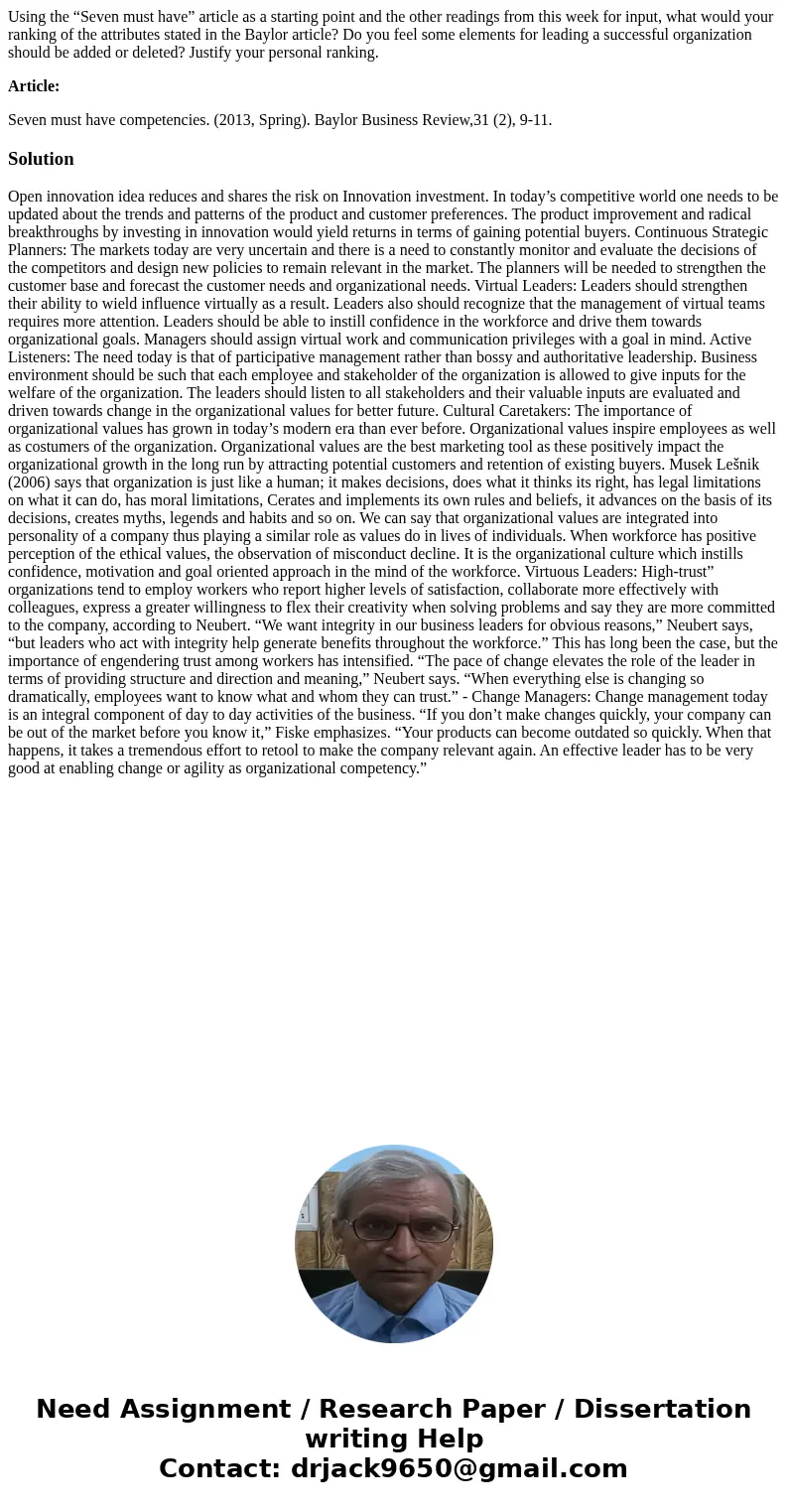Using the Seven must have article as a starting point and th
Using the “Seven must have” article as a starting point and the other readings from this week for input, what would your ranking of the attributes stated in the Baylor article? Do you feel some elements for leading a successful organization should be added or deleted? Justify your personal ranking.
Article:
Seven must have competencies. (2013, Spring). Baylor Business Review,31 (2), 9-11.
Solution
Open innovation idea reduces and shares the risk on Innovation investment. In today’s competitive world one needs to be updated about the trends and patterns of the product and customer preferences. The product improvement and radical breakthroughs by investing in innovation would yield returns in terms of gaining potential buyers. Continuous Strategic Planners: The markets today are very uncertain and there is a need to constantly monitor and evaluate the decisions of the competitors and design new policies to remain relevant in the market. The planners will be needed to strengthen the customer base and forecast the customer needs and organizational needs. Virtual Leaders: Leaders should strengthen their ability to wield influence virtually as a result. Leaders also should recognize that the management of virtual teams requires more attention. Leaders should be able to instill confidence in the workforce and drive them towards organizational goals. Managers should assign virtual work and communication privileges with a goal in mind. Active Listeners: The need today is that of participative management rather than bossy and authoritative leadership. Business environment should be such that each employee and stakeholder of the organization is allowed to give inputs for the welfare of the organization. The leaders should listen to all stakeholders and their valuable inputs are evaluated and driven towards change in the organizational values for better future. Cultural Caretakers: The importance of organizational values has grown in today’s modern era than ever before. Organizational values inspire employees as well as costumers of the organization. Organizational values are the best marketing tool as these positively impact the organizational growth in the long run by attracting potential customers and retention of existing buyers. Musek Lešnik (2006) says that organization is just like a human; it makes decisions, does what it thinks its right, has legal limitations on what it can do, has moral limitations, Cerates and implements its own rules and beliefs, it advances on the basis of its decisions, creates myths, legends and habits and so on. We can say that organizational values are integrated into personality of a company thus playing a similar role as values do in lives of individuals. When workforce has positive perception of the ethical values, the observation of misconduct decline. It is the organizational culture which instills confidence, motivation and goal oriented approach in the mind of the workforce. Virtuous Leaders: High-trust” organizations tend to employ workers who report higher levels of satisfaction, collaborate more effectively with colleagues, express a greater willingness to flex their creativity when solving problems and say they are more committed to the company, according to Neubert. “We want integrity in our business leaders for obvious reasons,” Neubert says, “but leaders who act with integrity help generate benefits throughout the workforce.” This has long been the case, but the importance of engendering trust among workers has intensified. “The pace of change elevates the role of the leader in terms of providing structure and direction and meaning,” Neubert says. “When everything else is changing so dramatically, employees want to know what and whom they can trust.” - Change Managers: Change management today is an integral component of day to day activities of the business. “If you don’t make changes quickly, your company can be out of the market before you know it,” Fiske emphasizes. “Your products can become outdated so quickly. When that happens, it takes a tremendous effort to retool to make the company relevant again. An effective leader has to be very good at enabling change or agility as organizational competency.”
 Homework Sourse
Homework Sourse